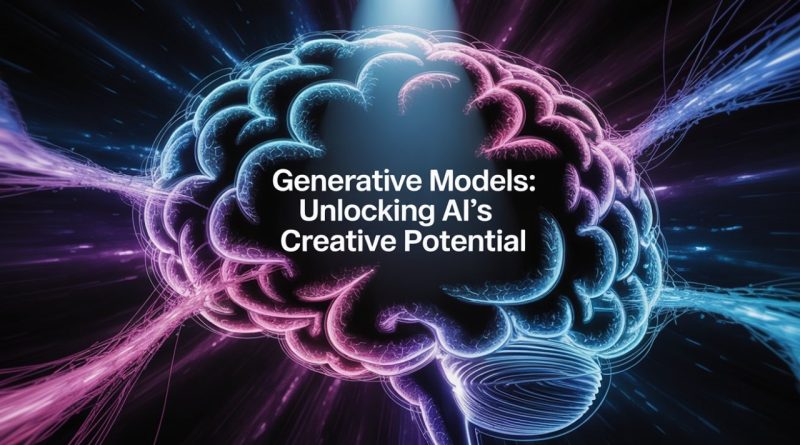Generative Models: Unlocking AI’s Creative Potential
In recent years, artificial intelligence has evolved from just an automation tool to human collaborators themselves. At the heart of this transformation is a compelling field of AI called generative models. These models do more than analyze or categorize data — they imagine.
In this blog post, we’re going to explore what generative models are, how they work, and why they’re so important for the future of technology and art.
What Are Generative Models?
Generative models are a class of machine learning models designed to generate new data that resembles the training data they’ve learned from. Rather than simply recognizing patterns, they can generate entirely new instances that share similar characteristics with the examples they were trained on.
For example:
- A model trained on landscape paintings can create new, original artworks in a similar style.
- A system trained on human speech can generate natural-sounding voices.
- A model trained on chemical data might propose new, viable compounds.
Key Types of Generative Models
1. Variational Autoencoders (VAEs)
VAEs are probabilistic models that learn to encode data into a latent representation and then decode it back into the original form. They are based on maximum likelihood estimation and are effective for applications such as:
- Image generation
- Data compression
- Feature extraction and learning
2. Autoregressive Models (e.g., GPT)
Autoregressive models generate data one token at a time, each step dependent on the previous output. Generative Pretrained Transformers (GPT) are a popular example. They excel in:
- Chatbots (like ChatGPT)
- Code generation (e.g., GitHub Copilot)
- Text-to-image conversion (when combined with other models)
Real-World Applications of Generative Models
Creative Industries
Artists, writers, and designers are embracing AI as a creative partner. Generative models help produce art styles, generate storyboards, write music, and spark new ideas faster than ever.
Science & Research
Generative models are transforming scientific discovery. In pharmaceuticals, they help propose new drug molecules. In climate science, they simulate complex weather models using limited data.
Healthcare
These models aid in generating medical imaging data for training, modeling disease progression, and creating synthetic patient data for safe research while preserving privacy.
Education & Accessibility
AI-powered tutors that adapt to different learning styles are becoming increasingly effective. Generative models are also improving accessibility tools such as speech-to-text and real-time translation systems.
Challenges and Ethical Considerations
Misinformation and Deepfakes
The power to generate hyper-realistic images, videos, or voices raises concerns about misinformation and deepfakes. The ability to deceive with AI-generated content is growing, and detection is becoming more difficult.
Bias in Training Data
If the training data contains biases, generative models may replicate and even amplify those biases. Ethical AI development must prioritize diverse, representative datasets and fairness.
Intellectual Property
Legal questions surround AI-generated content. Who owns the output? Can it infringe on an artist’s style? Laws and regulations around AI and copyright are still evolving.
The Future of Generative AI
Generative models are only just beginning to show their potential. As they become more efficient and specialized, they will integrate more deeply into our daily apps, tools, and creative workflows. From co-authoring content to designing products, the possibilities are vast.
The future isn’t about replacing humans with AI—it’s about enhancing human creativity and innovation with AI as a partner.
Final Thoughts
Generative models represent more than a leap in technology—they symbolize a shift in how we view machines, imagination, and collaboration. Whether you’re a developer, artist, educator, or business leader, engaging with these tools is no longer optional—it’s essential.
Want to explore generative AI tools or integrate them into your projects? Start now—the next wave of innovation is being written by humans and machines, together.
